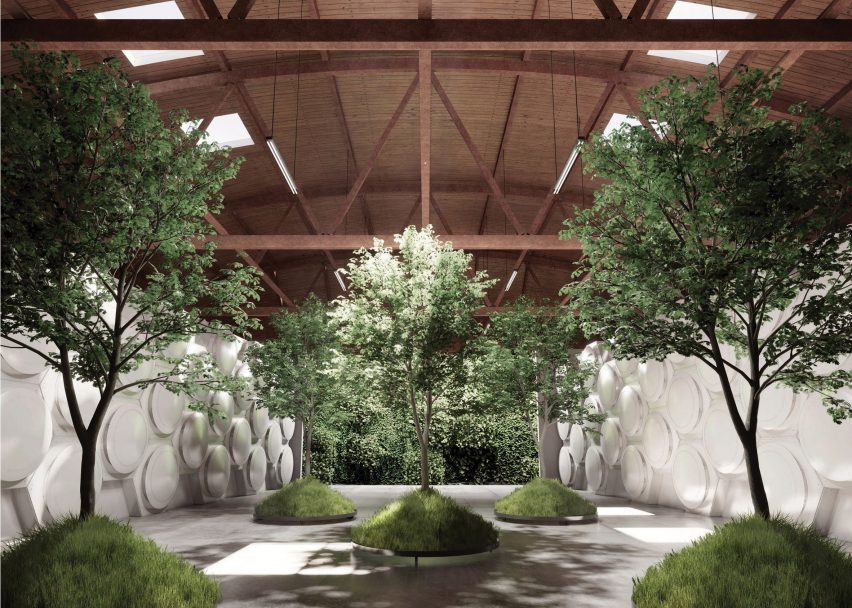
Olson Kundig unveils Recompose Seattle facility for composting human bodies
American firm Olson Kundig Architects has revealed plans for an after-death facility in Seattle where human bodies will be composted and turned into soil.
The Seattle studio designed the 18,500-square-foot (1,719-square-metre) centre for Recompose, a company founded by Katrina Spade to offer an alternative to cremation and burial. In 2016 Spade developed a building proposal for the concept.
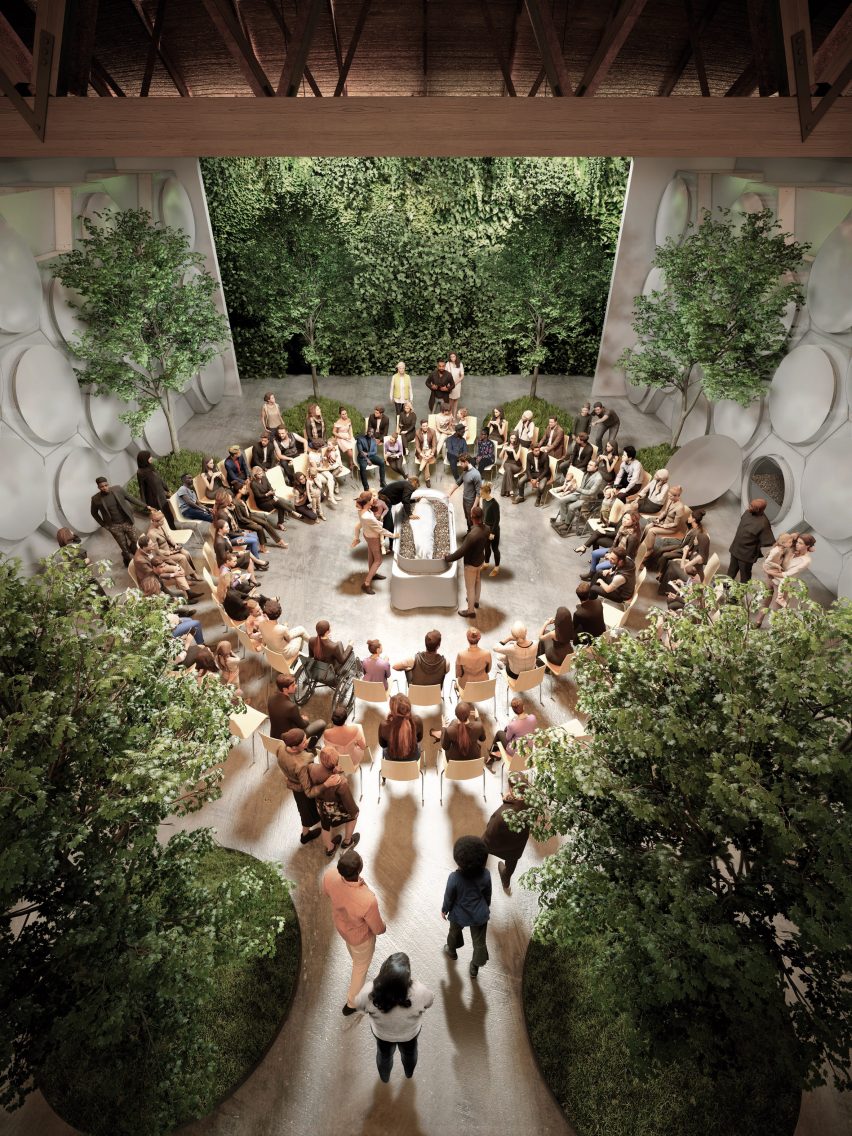
The Recompose Seattle project follows Washington becoming the first US state to legalise human composting in 2018.
Slated for completion in 2021, the facility is expected to be the first of its kind to offer human composting on a large scale.
According to Recompose, it will also be "the first facility in the world to provide a sustainable option for after-death care". The company highlights a number of ways that human composting is more sustainable and environmentally friendly in comparison to other options.
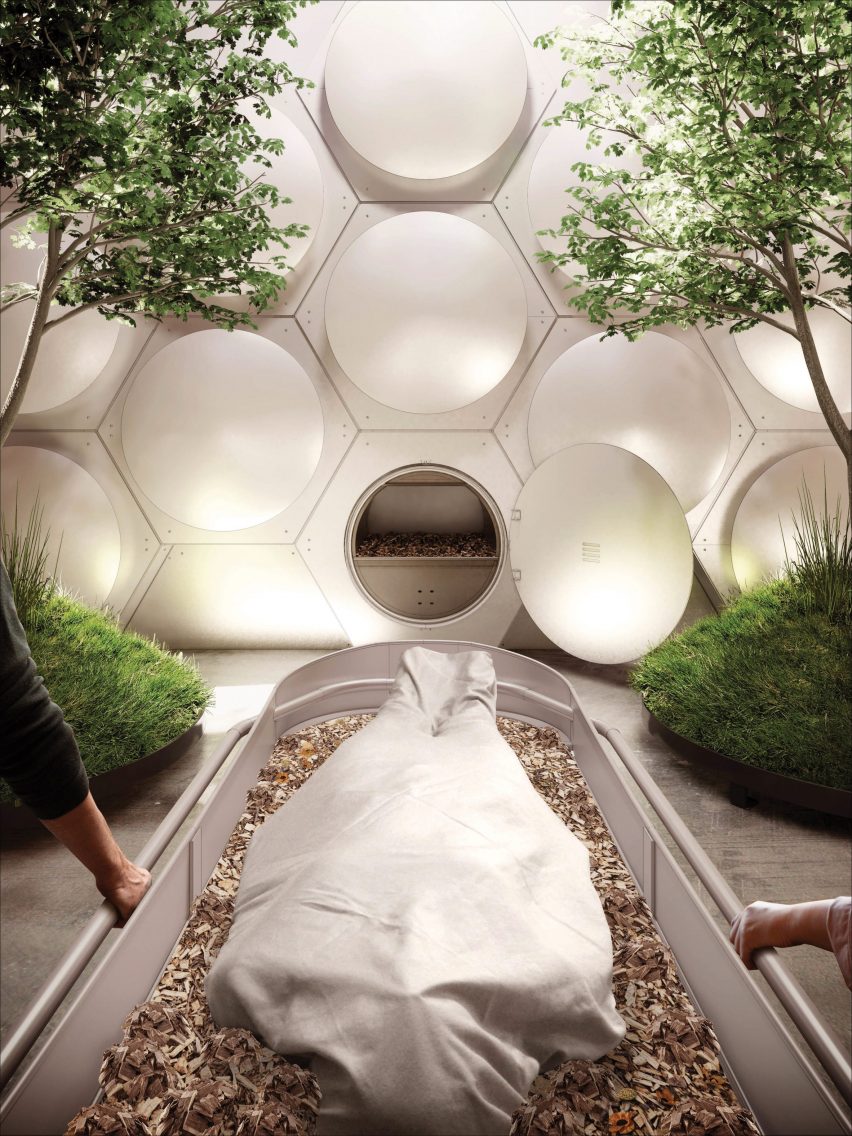
It says the process generates around a cubic yard of nutrient-rich soil from the human body, which can then be used for growing plants.
It also requires an eighth of the energy needed for cremation, and saves one metric ton of carbon dioxide per person in comparison. The process uses less space in comparison to burying bodies as well.
Led by Olson Kundig principal Alan Maskin, who also forms part of Recompose's team, the Seattle building design will accommodate Recompose's "patent-pending" process that involves placing bodies in a controlled, modular and reusable vessel, where they are covered in wood chips and aerated to promote break down.
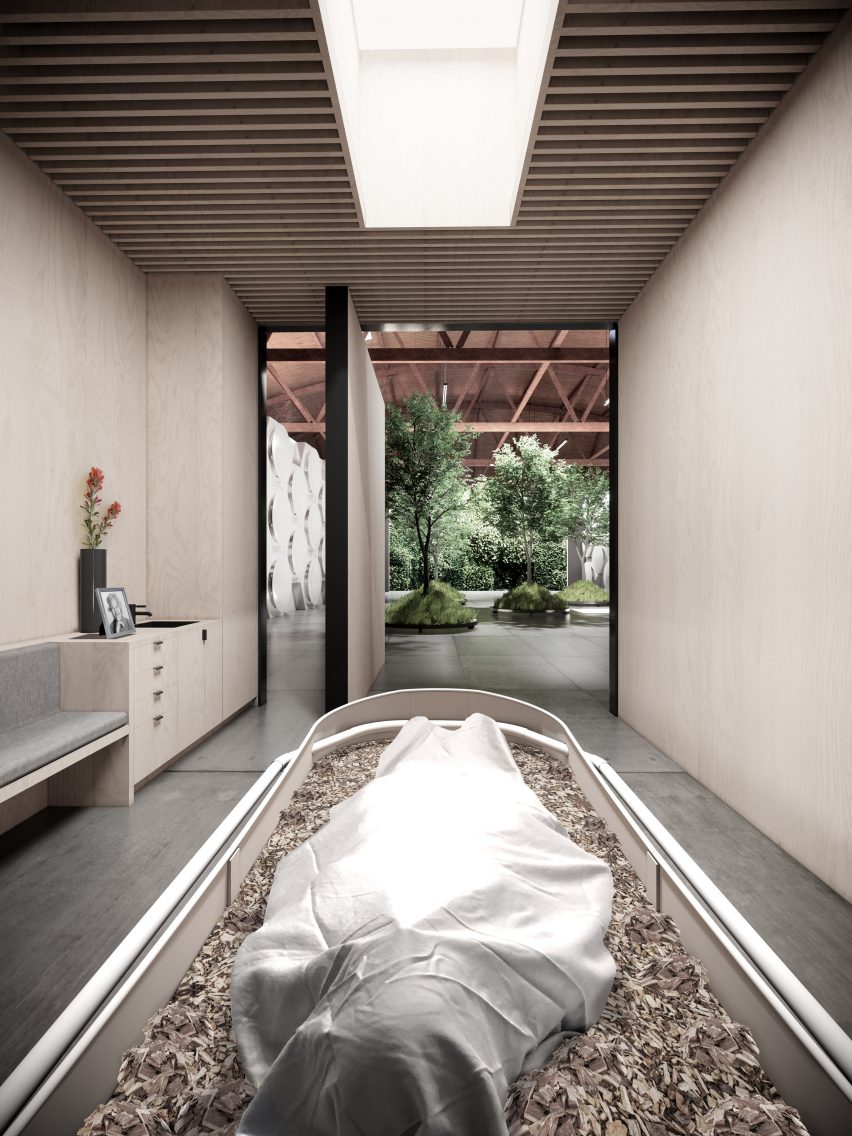
"Everything – including bones and teeth – is transformed," said Recompose. "That's because the system creates the perfect environment for thermophilic (ie heat-loving) microbes and beneficial bacteria to break everything down quite quickly."
"By controlling the ratio of carbon, nitrogen, oxygen, and moisture, the system creates the perfect environment for these creatures to thrive," it added.
"Recompose will mix the material at several points during the process to ensure thorough decomposition."
Renderings show the facility will have a large, open space with an arched, wooden ceiling dotted with skylights. White walls running on either side will feature hexagon-shaped portals with circular doors that open into the vessels where dead bodies decompose.
The open area will be used to hold ceremonies following death, with chairs arranged in a circular pattern to accommodate the gatherings.
"The core of the new facility's space is a modular system containing approximately 75 of these vessels, stacked and arranged to demarcate space for rituals and memorial ceremonies," said Recompose.
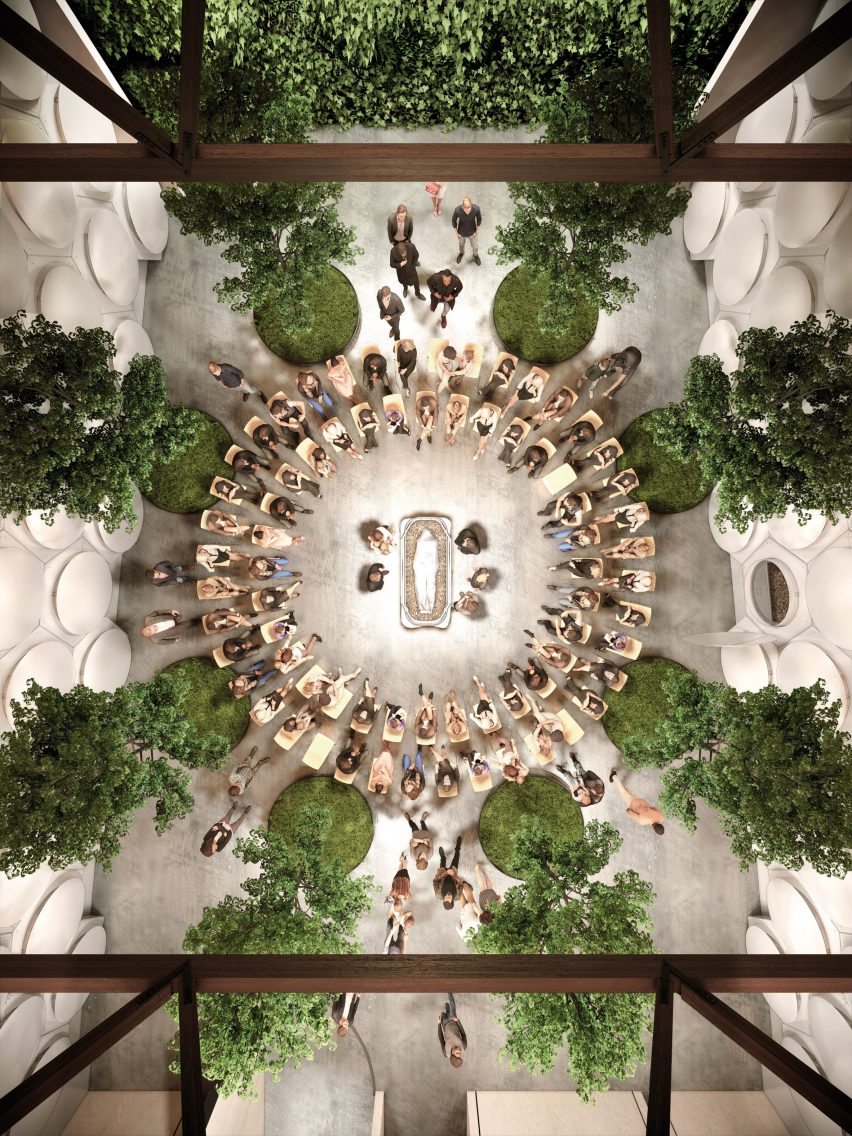
Trees will be planted atop grassy mounds that can be moved across the concrete floors, and form part of an abundance of greenery in the project.
"Nature is integrated across the building as well, with moveable trees situated throughout the main space, a living wall spanning the end of the facility, and abundant landscaping along the structure's ramped entrance," Recompose said.
The central room will be surrounded by treatment-like spaces where the dead bodies are prepared, placed atop the moveable vessels, and covered in white cloths. A pivoting door wall allows for easy movement of the body-filled vessel to its designated portal.
These rooms are clad in pale wood with matching slatted timber ceilings overhead. Images show the decor to include an upholstered grey bench, cabinet with drawers and a sink.
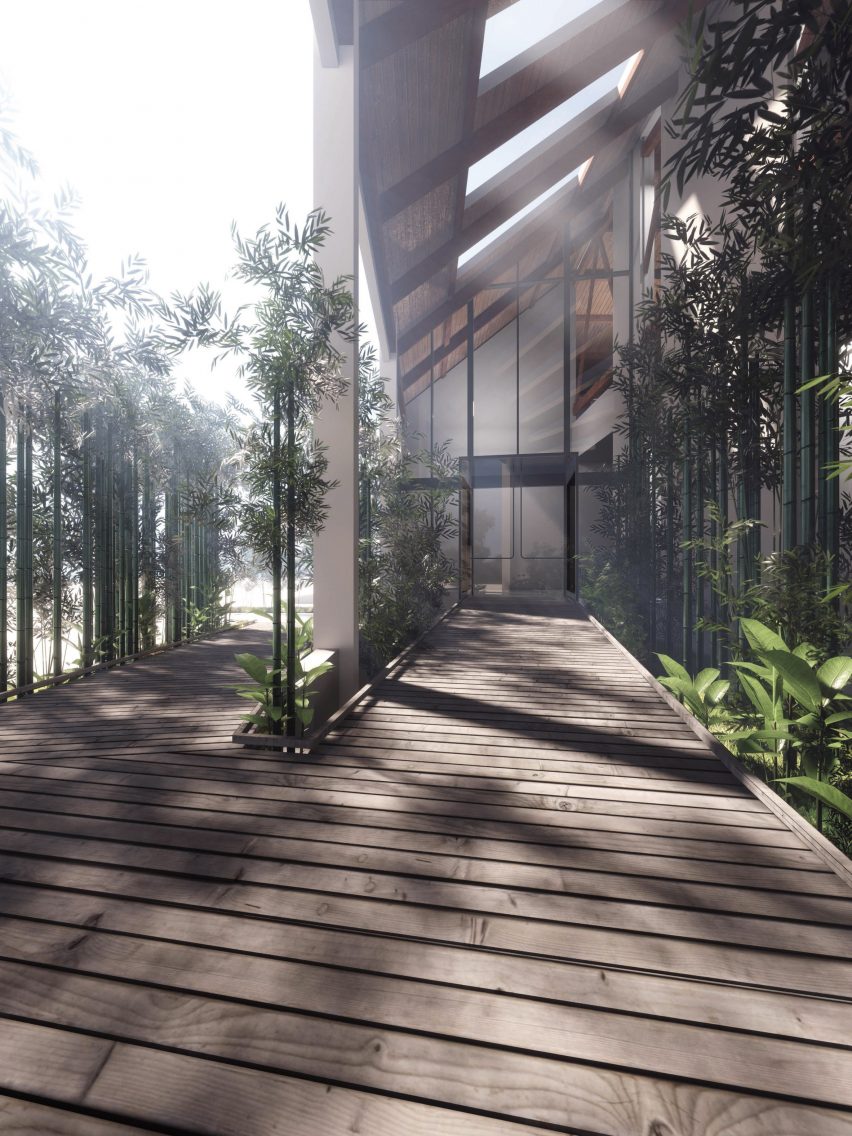
For those who do not want to own the resulting human-based soil, Recompose will dispatch the product to help reforest a 700-acre area of previously mismanaged, formerly-logged land in southern Washington in partnership with a non-profit conservation organisation.
Recompose's facility will be located in Seattle's SoDo neighbourhood, meaning South of Downtown, and is expected to open in spring 2021.
It follows a number of designs developed for a more sustainable death including an egg-shaped burial pod, a woven coffin and a cremation urn made of bioplastic.
Other after-death facilities that have already been built are Exit Here funeral parlour decorated like a home and an eco-crematorium in a former power station, both in London.